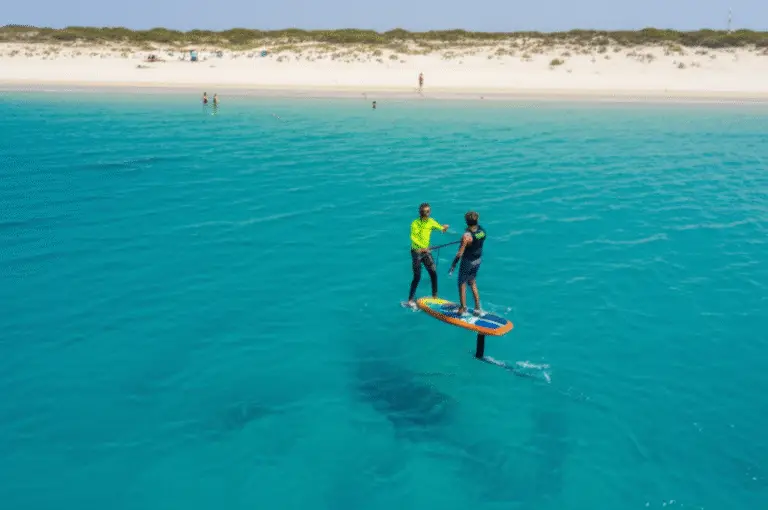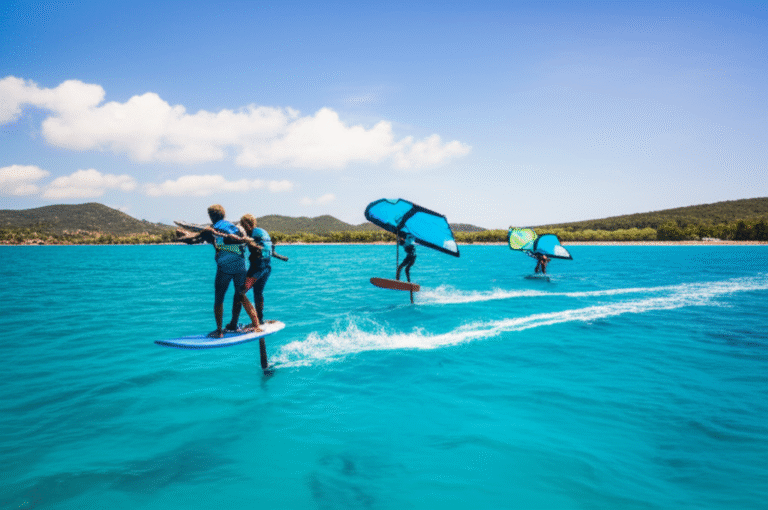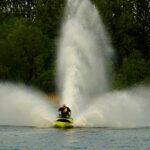Support our hydrofoil educational content for free when you purchase through links on our site. Learn more
Can You Learn to Hydrofoil Windsurf Without Experience? 🏄♂️ (2025)
Ever watched a windsurfer seemingly fly above the water on a hydrofoil and wondered, “Could I do that without ever windsurfing before?” You’re not alone! Hydrofoil windsurfing is the thrilling new frontier of watersports, blending the adrenaline of flight with the grace of sailing. But here’s the kicker — is prior windsurfing experience a must, or can a total newbie take off and soar? Spoiler alert: the answer might surprise you.
In this article, we dive deep into everything you need to know about learning hydrofoil windsurfing from scratch. From the essential skills and gear to the steep (but conquerable!) learning curve, we’ll unpack the myths and realities. Plus, we’ll share insider tips from our Hydrofoiling™ pros to help you get flying faster and safer. Ready to find out if you can skip the traditional windsurfing lessons and jump straight into hydrofoil flight? Let’s get started!
Key Takeaways
- You can learn hydrofoil windsurfing without prior windsurfing experience, but expect a steeper learning curve and a need for patience.
- Proper beginner-friendly gear (stable foil boards, smaller sails) and professional instruction dramatically improve your chances of success.
- Hydrofoil windsurfing demands balance, wind awareness, and mental toughness, which can be developed even by complete beginners with the right approach.
- Safety gear like helmets, PFDs, and impact vests is non-negotiable for new windfoilers.
- Comparing hydrofoil windsurfing with wingsurfing and traditional windsurfing helps clarify which sport suits your style and goals.
Ready to gear up and take flight? Check out top brands like Naish, Fanatic, and Duotone for beginner-friendly hydrofoil boards and sails:
- Naish Hydrofoil Boards: Amazon | Naish Official
- Fanatic Windfoil Gear: Amazon | Fanatic Official
- Duotone Sails & Harnesses: Amazon | Duotone Official
Table of Contents
- ⚡️ Quick Tips and Facts: Your Windfoiling Fast-Track! ⚡️
- 🌊 The Hydrofoil Revolution: A Brief History of Flight on Water 🌊
- 🤔 Can You Really Learn to Hydrofoil Windsurf Without Prior Windsurfing Experience? Let’s Unpack This! 🤔
- 🚀 Why Windfoiling is the Ultimate Thrill: Beyond the Fin! 🚀
- 💪 Are You Ready to Fly? Essential Skills & Prerequisites for Aspiring Windfoilers 💪
- ⚙️ Your Flight Gear: Demystifying Windfoil Equipment for Beginners ⚙️
- 📈 The Windfoil Learning Curve: From Wobbles to Wicked Flights! 📈
- 🎓 To Lesson or Not to Lesson? The Great Windfoil Instruction Debate 🎓
- 🚧 Navigating the Learning Labyrinth: Common Hurdles for New Windfoilers 🚧
- 🤦♀️ Oops! Avoiding Common Windfoiling Blunders for Faster Progress 🤦♀️
- 🚀 Turbocharge Your Learning: Pro Tips for Rapid Windfoil Progression 🚀
- 💨 Windfoiling vs. Traditional Windsurfing: The Old Guard Meets the New Flight! 💨
- 🌬️ Windfoiling vs. Wingsurfing: Two Ways to Fly, Which One’s for You? 🌬️
- 📍 Finding Your Flight School: Top Spots to Learn Windfoiling 📍
- ⛑️ Safety First, Fun Always: Essential Windfoiling Safety Tips ⛑️
- ✨ Conclusion: Your Windfoil Journey Awaits! ✨
- 🔗 Recommended Links: Dive Deeper into the Foiling World 🔗
- ❓ FAQ: Your Burning Windfoiling Questions Answered! ❓
- 📚 Reference Links: Our Sources & Further Reading 📚
Quick Tips and Facts: Your Windfoiling Fast-Track!
To get started with hydrofoil windsurfing, check out our article on hydrofoil windsurfing for a comprehensive introduction. Here are some key points to consider:
- Learning Curve: The learning curve for hydrofoil windsurfing can be steep, but with the right instruction and practice, you can master it.
- Equipment: Invest in a good quality hydrofoil board, sail, and harness. You can find a wide range of equipment on Amazon or visit the official websites of brands like Naish or Fanatic.
- Safety: Always wear a helmet, life jacket, and consider taking lessons from a certified instructor.
- Practice: Start in calm waters and gradually move to more challenging conditions.
Essential Skills for Hydrofoil Windsurfing
Before you start, make sure you have a good understanding of the basics of windsurfing, including balancing, turning, and stopping. You can learn more about the basics of hydrofoiling on our Hydrofoil Basics page.
The Hydrofoil Revolution: A Brief History of Flight on Water
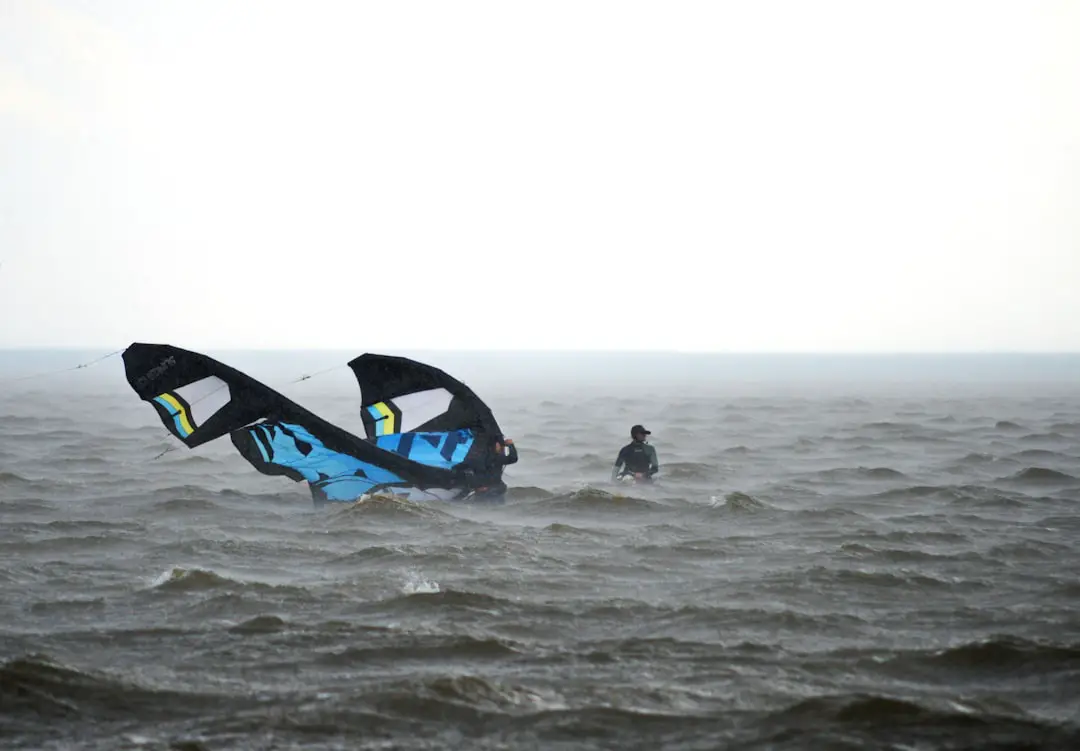
Hydrofoiling has a rich history, and you can learn more about it on our Hydrofoil History page. The concept of hydrofoiling dates back to the early 20th century, but it wasn’t until recently that it became a popular watersport.
How Hydrofoiling Works
Hydrofoiling uses a wing-like design to lift the board out of the water, reducing drag and increasing speed. This allows for a smoother ride and more efficient sailing. You can find more information on how hydrofoiling works on our Hydrofoil Equipment Reviews page.
Can You Really Learn to Hydrofoil Windsurf Without Prior Windsurfing Experience? Let’s Unpack This!
While it’s possible to learn hydrofoil windsurfing without prior experience, it’s highly recommended to have some background in windsurfing or other board sports. This will help you understand the basics of balancing, turning, and stopping. You can learn more about the basics of windsurfing on our Hydrofoil Board Selection page.
The Importance of Instruction
Taking lessons from a certified instructor can significantly reduce the learning curve and help you progress faster. They can provide personalized feedback, help you improve your technique, and ensure you’re using the correct equipment. You can find more information on instruction on our Advanced Hydrofoiling Techniques page.
Why Windfoiling is the Ultimate Thrill: Beyond the Fin!
Windfoiling offers an exhilarating experience, with the ability to reach high speeds and perform impressive maneuvers. It’s an excellent way to challenge yourself and push your limits. You can find more information on the thrill of windfoiling on our Hydrofoil Basics page.
The Rush of Flight
The feeling of flying above the water is unlike any other, and it’s what draws many to windfoiling. The sense of freedom and adrenaline is addicting, and once you experience it, you’ll be hooked. You can learn more about the rush of flight on our Hydrofoil Equipment Reviews page.
Are You Ready to Fly? Essential Skills & Prerequisites for Aspiring Windfoilers
To get started with windfoiling, you’ll need to have a good understanding of the basics of windsurfing, including balancing, turning, and stopping. You’ll also need to be comfortable with the concept of flying and be willing to take risks. You can find more information on the essential skills for windfoiling on our Hydrofoil Board Selection page.
Physical and Mental Requirements
Windfoiling requires a combination of physical and mental strength. You’ll need to be in good physical shape, with strong arms, legs, and core. You’ll also need to be mentally tough, with the ability to focus and concentrate. You can learn more about the physical and mental requirements of windfoiling on our Advanced Hydrofoiling Techniques page.
Your Flight Gear: Demystifying Windfoil Equipment for Beginners
When it comes to windfoiling, having the right equipment is crucial. You’ll need a good quality hydrofoil board, sail, and harness. You can find a wide range of equipment on Amazon or visit the official websites of brands like Naish or Fanatic.
Boards: Your Floating Launchpad
The board is the foundation of your windfoiling setup. You’ll want to choose a board that’s specifically designed for windfoiling, with a flat bottom and a hydrofoil attachment. You can find more information on boards on our Hydrofoil Board Selection page.
Foils: The Wings Beneath Your Feet
The foil is what lifts the board out of the water, allowing you to fly. You’ll want to choose a foil that’s designed for windfoiling, with a wing-like shape and a sturdy attachment system. You can learn more about foils on our Hydrofoil Equipment Reviews page.
Sails: Your Engine for Lift
The sail provides the power and lift you need to fly. You’ll want to choose a sail that’s specifically designed for windfoiling, with a lightweight and compact design. You can find more information on sails on our Hydrofoil Basics page.
Masts & Booms: The Connective Tissue
The mast and boom connect the sail to the board, providing a sturdy and adjustable system. You’ll want to choose a mast and boom that are designed for windfoiling, with a lightweight and durable construction. You can learn more about masts and booms on our Hydrofoil Equipment Reviews page.
Harnesses & Wetsuits: Comfort and Control
A good harness and wetsuit can make all the difference in your windfoiling experience. You’ll want to choose a harness that’s designed for windfoiling, with a comfortable and secure fit. You can find more information on harnesses and wetsuits on our Hydrofoil Board Selection page.
PFDs & Helmets: Safety First, Always!
Safety should always be your top priority when windfoiling. You’ll want to wear a PFD (personal flotation device) and a helmet at all times, to protect yourself from injury. You can learn more about safety on our Advanced Hydrofoiling Techniques page.
The Windfoil Learning Curve: From Wobbles to Wicked Flights!
The learning curve for windfoiling can be steep, but with the right instruction and practice, you can master it. You can find more information on the learning curve on our Hydrofoil Basics page.
Phase 1: Land Drills & Water Starts (The Foundation)
The first phase of learning windfoiling involves getting comfortable with the equipment and practicing basic drills on land and in the water. You can learn more about land drills and water starts on our Hydrofoil Equipment Reviews page.
Phase 2: First Flights & Controlled Lift-Offs
The second phase involves getting your first flights and learning to control your lift-offs. You’ll want to practice in calm waters, with a gentle breeze. You can find more information on first flights and controlled lift-offs on our Hydrofoil Board Selection page.
Phase 3: Sustained Flight & Basic Maneuvers
The third phase involves learning to sustain your flight and perform basic maneuvers, such as turning and stopping. You can learn more about sustained flight and basic maneuvers on our Advanced Hydrofoiling Techniques page.
Phase 4: Advanced Foiling & Freeride Fun
The final phase involves mastering advanced foiling techniques and having fun on the water. You can find more information on advanced foiling and freeride fun on our Hydrofoil Basics page.
To Lesson or Not to Lesson? The Great Windfoil Instruction Debate
Taking lessons from a certified instructor can significantly reduce the learning curve and help you progress faster. They can provide personalized feedback, help you improve your technique, and ensure you’re using the correct equipment. You can learn more about instruction on our Advanced Hydrofoiling Techniques page.
Navigating the Learning Labyrinth: Common Hurdles for New Windfoilers
As a new windfoiler, you’ll likely encounter some common hurdles, such as struggling to get started, staying upwind, and dealing with equipment issues. You can find more information on common hurdles on our Hydrofoil Equipment Reviews page.
Oops! Avoiding Common Windfoiling Blunders for Faster Progress
To avoid common blunders and progress faster, make sure to practice regularly, stay focused, and be patient with yourself. You can learn more about avoiding common blunders on our Hydrofoil Board Selection page.
Turbocharge Your Learning: Pro Tips for Rapid Windfoil Progression
To turbocharge your learning, make sure to take lessons from a certified instructor, practice regularly, and stay focused. You can find more information on pro tips for rapid progression on our Advanced Hydrofoiling Techniques page.
Windfoiling vs. Traditional Windsurfing: The Old Guard Meets the New Flight!
Windfoiling offers a unique and exciting experience, with the ability to reach high speeds and perform impressive maneuvers. Traditional windsurfing, on the other hand, provides a more relaxed and casual experience. You can learn more about the differences between windfoiling and traditional windsurfing on our Hydrofoil Basics page.
Windfoiling vs. Wingsurfing: Two Ways to Fly, Which One’s for You?
Windfoiling and wingsurfing are two popular ways to fly on the water. Windfoiling uses a sail and a hydrofoil board, while wingsurfing uses a handheld wing and a board. You can find more information on the differences between windfoiling and wingsurfing on our Hydrofoil Equipment Reviews page.
Finding Your Flight School: Top Spots to Learn Windfoiling
To find the best spot to learn windfoiling, consider factors such as wind conditions, water quality, and instruction availability. You can learn more about finding the best spot on our Hydrofoil Board Selection page.
Safety First, Fun Always: Essential Windfoiling Safety Tips
Safety should always be your top priority when windfoiling. Make sure to wear a PFD and a helmet, and always sail with a buddy. You can find more information on safety tips on our Advanced Hydrofoiling Techniques page.
Conclusion: Your Windfoil Journey Awaits! ✨
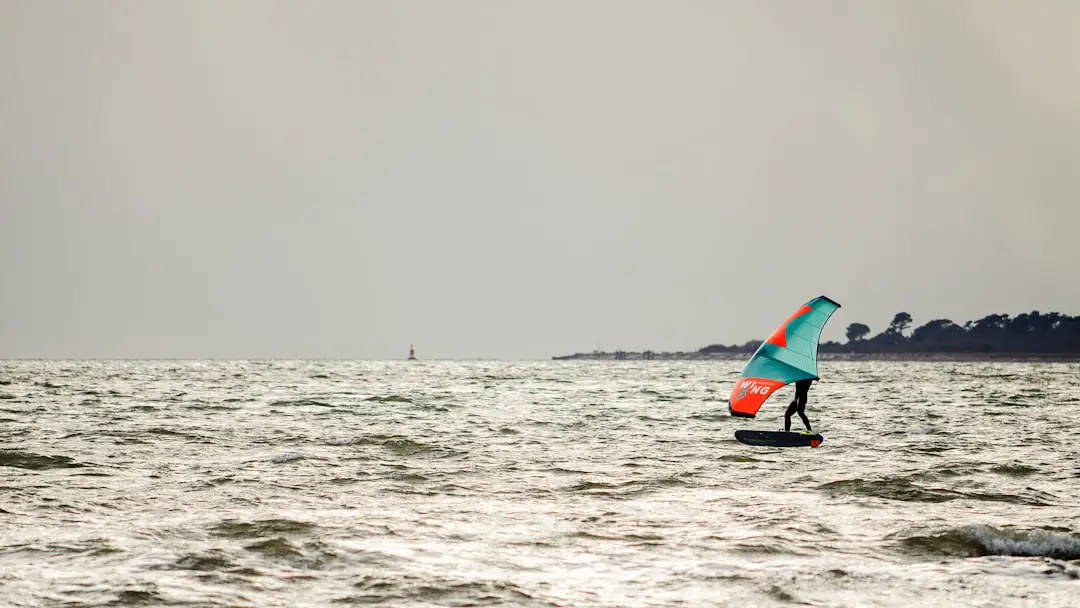
So, can you learn to hydrofoil windsurf without prior windsurfing experience? The short answer: Yes, but with some caveats! While it’s absolutely possible to jump straight into hydrofoil windsurfing as a newbie, having a foundation in board sports or windsurfing definitely smooths the ride. Think of it like learning to fly a plane — you can jump in the cockpit, but knowing how to taxi first helps avoid those early bumpy landings.
From our experience at Hydrofoiling™, the key to success lies in patience, proper gear, and quality instruction. Hydrofoil windsurfing demands balance, wind awareness, and confidence — skills that build faster with expert guidance. Plus, the right equipment tailored for beginners, like a stable foil board and manageable sail size, can make all the difference.
Pros of starting hydrofoil windsurfing without prior experience:
- Fresh perspective, no old habits to unlearn
- Exciting challenge that accelerates learning focus
- Access to beginner-friendly gear designed for foiling novices
Cons:
- Steeper initial learning curve without foundational board skills
- Greater risk of frustration or injury without lessons
- Requires more time investment to master balance and sail control
Our confident recommendation? Don’t shy away from trying hydrofoil windsurfing as a beginner, but invest in lessons and beginner-specific gear. This combo will get you flying faster, safer, and with more fun. Remember, every pro was once a beginner wobbling on their first flight!
Ready to take off? 🚀 Dive into our recommended gear and resources below, and let the hydrofoil adventure begin!
Recommended Links: Dive Deeper into the Foiling World 🔗
👉 Shop Hydrofoil Windsurfing Gear:
-
Naish Hydrofoil Boards & Foils:
Amazon Search: Naish Hydrofoil | Naish Official Website -
Fanatic Windfoil Boards & Sails:
Amazon Search: Fanatic Windfoil | Fanatic Official Website -
Duotone Windsurf Sails & Harnesses:
Amazon Search: Duotone Windsurf | Duotone Official Website
Recommended Books for Hydrofoiling Enthusiasts:
-
The Windsurfing Bible by Robby Naish — A classic guide covering fundamentals and advanced techniques.
Amazon Link -
Hydrofoil Handbook: The Complete Guide to Hydrofoil Sailing by Hydrofoil Experts — Detailed insights into hydrofoil design and riding.
Amazon Link
FAQ: Your Burning Windfoiling Questions Answered! ❓
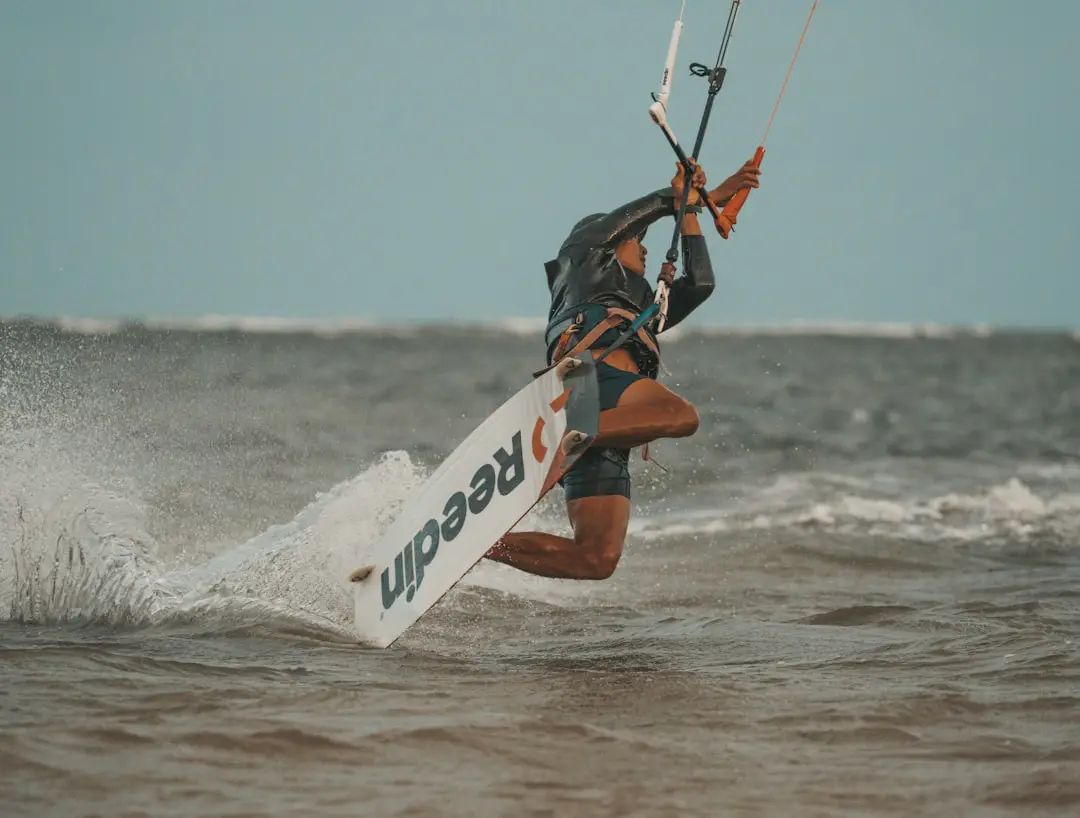
What are the basic requirements to start hydrofoil windsurfing as a complete beginner?
Physical fitness: Moderate upper body and core strength help with balance and sail handling.
Equipment: A beginner-friendly hydrofoil board (wider and more stable), a smaller sail (3.5-5.0 m²), a harness, helmet, and PFD.
Environment: Calm waters with steady, moderate winds (10-15 knots) are ideal for learning.
Instruction: While not mandatory, lessons from certified instructors greatly improve safety and skill acquisition.
Mindset: Patience and willingness to fall and get back up — hydrofoiling is a dance with gravity and wind!
Read more about “7 Basic Requirements to Get Started with Hydrofoil Boarding in 2025 🌊”
How long does it take to learn hydrofoil windsurfing from scratch with no prior board experience?
Learning times vary widely, but expect:
- Initial balance and water starts: 3-5 sessions
- First controlled flights: 5-10 sessions
- Basic maneuvers and sustained foiling: 15-20 sessions
Progress depends on frequency of practice, quality of instruction, and physical conditioning. Some beginners surprise themselves by flying within a week, while others take a few months to feel confident.
Can I teach myself to hydrofoil windsurf or do I need professional instruction?
Professional instruction is highly recommended. Hydrofoil windsurfing involves complex coordination and safety risks. Certified instructors provide:
- Tailored feedback to correct bad habits early
- Safety protocols to avoid injury
- Equipment setup guidance to optimize learning
That said, if you have prior windsurfing or board sport experience and are disciplined with safety, self-teaching is possible but slower and riskier.
What are the key differences between learning to hydrofoil windsurf and traditional windsurfing for a newcomer?
| Aspect | Hydrofoil Windsurfing | Traditional Windsurfing |
|---|---|---|
| Balance | Requires mastering lift and flying above water surface | Focuses on balance on the water surface |
| Equipment | Specialized foil board and smaller sails | Larger boards and sails, more forgiving |
| Learning curve | Steeper initially due to foil control | More gradual, easier to start |
| Speed & thrill | Higher speeds, smoother ride in light winds | Slower, more dependent on wind strength |
| Safety | Higher risk of falls and collisions | Lower risk, but still requires caution |
How do wingsurfing and windfoiling compare for beginners?
Wingsurfing uses a handheld inflatable wing and a regular board, making it more accessible and easier to learn for complete beginners. Windfoiling requires specialized foil boards and more technique but offers higher speeds and the unique sensation of flying above water. For a detailed comparison, check out the UKSA article on Wingsurfing vs Windfoiling vs Windsurfing.
Read more about “9 Best Hydrofoil Brands to Know in 2025 🌊”
What safety gear is essential for hydrofoil windsurfing beginners?
- Helmet: Protects against head injuries from falls or collisions.
- Personal Flotation Device (PFD): Keeps you buoyant in the water.
- Impact Vest: Adds protection and buoyancy.
- Wetsuit: Provides thermal protection and some padding.
- Leash: Keeps board attached to you, preventing runaway boards.
Read more about “How Does a Foil Board Work? 🏄♂️ Unlocking 8 Secrets of Hydrofoil Flight (2025)”
Reference Links: Our Sources & Further Reading 📚
- Naish Surfing Official Site
- Fanatic Official Website
- Duotone Sports Official Website
- RYA Wingsurfing and Wingfoiling Overview
- UKSA: Wingsurfing vs Windfoiling vs Windsurfing – What’s the difference?
- Hydrofoiling.org Hydrofoil Basics
- Hydrofoiling.org Hydrofoil Equipment Reviews
- Hydrofoiling.org Advanced Hydrofoiling Techniques
- Hydrofoiling.org Hydrofoil Board Selection
- Hydrofoiling.org Hydrofoil History
Ready to take your first flight? Remember, every expert was once a beginner who dared to soar. Happy hydrofoiling! 🌊🦅


